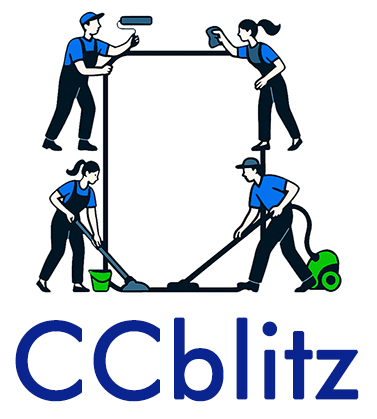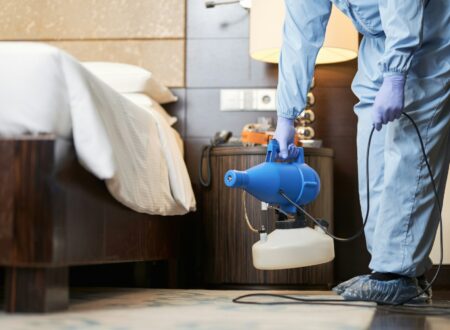A clean office is more than just an aesthetic preference. It is the foundation of a healthy, organised, and productive work environment. Employees spend a significant portion of their day in the workplace, and the cleanliness of that environment directly impacts their wellbeing, concentration, and efficiency. Beyond employee morale, an immaculate office also creates a positive impression on clients and visitors, strengthening your company’s professional image.
This article presents the ultimate office cleaning checklist that ensures a spotless workspace while promoting productivity, health, and organisational culture.
Why Office Cleaning Matters
Before diving into the checklist, it is important to understand why office cleaning should be prioritised.
- Boosts Productivity
Research shows that cluttered or dirty environments reduce concentration. A clean desk and office space reduce distractions, allowing employees to focus better on their tasks. - Supports Employee Health
Germs thrive in communal office areas such as desks, keyboards, kitchens, and restrooms. Regular cleaning reduces the spread of illnesses, minimises sick days, and fosters a healthier workforce. - Enhances Company Image
First impressions matter. An untidy office can create doubts about professionalism. Conversely, a spotless environment communicates attention to detail and reliability. - Preserves Office Assets
Dust, dirt, and neglect damage furniture, electronics, and flooring over time. Routine cleaning protects investments and prolongs the lifespan of office equipment.
The Daily Office Cleaning Checklist
Daily cleaning ensures that the workspace remains neat and hygienic, preventing dirt and clutter from building up.
Workstations and Desks
- Wipe desks, chairs, and phones with disinfectant wipes.
- Remove clutter, unnecessary papers, and coffee cups.
- Disinfect keyboards and computer mice, which harbour bacteria.
Floors and Carpets
- Vacuum carpets and rugs.
- Sweep and mop hard flooring with a non-slip solution.
Trash and Recycling
- Empty bins daily to prevent odours and pests.
- Replace liners and separate recyclables.
Restrooms
- Clean sinks, mirrors, and counters.
- Disinfect toilet bowls, seats, and handles.
- Restock soap, tissue, and paper towels.
Kitchen and Breakroom
- Wash dirty dishes and load dishwashers if available.
- Wipe counters, sinks, and tables with disinfectant.
- Empty food waste bins and clean microwaves, coffee makers, and refrigerators.
The Weekly Office Cleaning Checklist
Weekly cleaning tasks focus on deepening hygiene practices and handling areas that do not need daily attention.
Floors and Surfaces
- Steam-clean carpets or spot-treat stains.
- Dust skirting boards, shelves, and office equipment.
Furniture
- Vacuum upholstered chairs.
- Polish wooden furniture and wipe down leather chairs with appropriate cleaners.
Windows and Glass Surfaces
- Clean interior windows, mirrors, and glass partitions to eliminate fingerprints and smudges.
High-Touch Surfaces
- Disinfect door handles, lift buttons, shared printers, and light switches.
Kitchen Appliances
- Deep-clean refrigerators by removing old food.
- Wipe microwaves and ovens thoroughly.
The Monthly Office Cleaning Checklist
Monthly cleaning ensures that every part of the office, even the less obvious areas, stays in top condition.
Floors and Walls
- Professionally deep-clean carpets to remove dirt and allergens.
- Wash walls to eliminate marks and smudges.
Ceilings and Fixtures
- Dust ceiling fans, vents, and light fixtures.
- Replace burnt-out lightbulbs and clean light covers.
Office Equipment
- Wipe and sanitise telephones, photocopiers, and printers thoroughly.
- Dust computer monitors and screens with suitable cleaning solutions.
Storage Areas
- Declutter supply rooms and organise files.
- Dust shelves and clean storage boxes.
Seasonal or Quarterly Cleaning Checklist
Every few months, go beyond the standard tasks to refresh the entire office environment.
- Wash and polish windows both inside and outside.
- Perform pest control inspections.
- Shampoo carpets and upholstered furniture.
- Check and clean HVAC systems for dust and allergens.
- Repaint or touch up walls where needed.
- Reorganise office layout if clutter accumulates.
Special Attention Areas
Some office areas require particular attention due to heavy use or heightened risk of germs.
Reception Area
This is the first space visitors see, so it must always look pristine. Keep the area free from clutter, vacuum regularly, and disinfect surfaces such as counters and seating.
Conference Rooms
Meeting spaces must be dust-free, with polished tables, sanitised equipment, and clean chairs. Always tidy up after meetings.
Shared Devices
Printers, phones, and projectors are handled by many people daily. Regular disinfecting prevents the spread of bacteria.
Creating an Office Cleaning Schedule
A cleaning checklist is only effective if it is implemented systematically. Here are practical tips for creating a cleaning schedule:
- Assign Responsibilities
Decide whether tasks will be handled by employees or outsourced to a professional cleaning service. - Use a Checklist Template
Display the daily and weekly checklist in staff rooms for accountability. - Prioritise High-Traffic Areas
Kitchens, restrooms, and entryways should always receive more frequent cleaning. - Schedule Deep Cleaning
Plan professional cleaning services at least quarterly to address areas beyond surface cleaning.
Professional Cleaning Services vs. In-House Cleaning
While employees can maintain daily tidiness, professional cleaning services often provide deeper expertise and equipment.
Benefits of Professional Cleaning Services:
- Access to industrial-grade cleaning tools and supplies.
- Experience in handling specialised tasks like carpet shampooing or sanitising electronics.
- Reliable schedules that do not disrupt daily operations.
However, combining professional services with employee responsibility creates the most effective balance.
Tips to Keep the Office Consistently Clean
- Encourage employees to clear desks before leaving each day.
- Place hand sanitisers in communal areas to promote hygiene.
- Provide bins in strategic spots to avoid littering.
- Implement a “clean desk policy” to maintain order.
- Reward departments that maintain the cleanest work areas.
Conclusion
A clean office is not just about appearances. It enhances productivity, supports employee health, and preserves your organisation’s reputation. By following a structured cleaning checklist that covers daily, weekly, monthly, and quarterly tasks, businesses can maintain a workspace that inspires both employees and visitors.
Investing time and resources into cleaning is ultimately an investment in employee well-being, workplace efficiency, and the overall success of the business.


